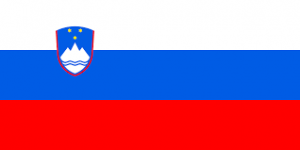Language/Slovenian/Vocabulary/Modes-of-Transportation
| ◀️ Adverbs — Previous Lesson | Next Lesson — Asking for Directions ▶️ |
In this lesson, we will explore the vocabulary related to travel and transportation in Slovenian. Knowing the names of different modes of transportation is essential for navigating Slovenia and communicating with locals. Whether you are traveling by car, bus, train, or airplane, this lesson will equip you with the necessary vocabulary to get around the country with ease.
Modes of Transportation in Slovenian[edit | edit source]
Transportation plays a vital role in our daily lives, allowing us to travel from one place to another quickly and conveniently. Let's begin by learning the names of different modes of transportation in Slovenian.
Car[edit | edit source]
The car is one of the most common modes of transportation worldwide. In Slovenian, a car is called "avto" or "avtomobil". Here are a few examples of how to use the word "avto" in Slovenian sentences:
| Slovenian | Pronunciation | English |
|---|---|---|
| avto | /ˈaʊ̯.toʊ/ | car |
- Moj oče ima nov avto. (My father has a new car.)
- Sosedov avto je črn. (The neighbor's car is black.)
Bus[edit | edit source]
Buses are an integral part of Slovenia's public transportation system, connecting cities, towns, and villages. In Slovenian, a bus is called "avtobus". Here are a few examples of how to use the word "avtobus" in Slovenian sentences:
| Slovenian | Pronunciation | English |
|---|---|---|
| avtobus | /ˈaʊ̯.toˌbʊs/ | bus |
- Zjutraj sem se peljal z avtobusom v službo. (I took the bus to work in the morning.)
- Kje je postaja avtobusa? (Where is the bus station?)
Train[edit | edit source]
Trains are another popular mode of transportation in Slovenia, offering a comfortable and scenic way to explore the country. In Slovenian, a train is called "vlak". Here are a few examples of how to use the word "vlak" in Slovenian sentences:
| Slovenian | Pronunciation | English |
|---|---|---|
| vlak | /ˈvlaːk/ | train |
- Kateri vlak pelje v Ljubljano? (Which train goes to Ljubljana?)
- Vlak je zamujal petnajst minut. (The train was fifteen minutes late.)
Airplane[edit | edit source]
For long-distance travel, airplanes are often the fastest and most convenient option. In Slovenian, an airplane is called "letalo". Here are a few examples of how to use the word "letalo" in Slovenian sentences:
| Slovenian | Pronunciation | English |
|---|---|---|
| letalo | /lɛˈtaː.lo/ | airplane |
- Letalo je pristalo na letališču. (The airplane landed at the airport.)
- Kupila sem karto za letalo v Pariz. (I bought a ticket for a flight to Paris.)
Cultural Insights[edit | edit source]
Understanding the cultural context surrounding transportation in Slovenia can enhance your language learning experience. Let's explore some interesting cultural facts and regional variations related to modes of transportation in Slovenia.
Public Transportation in Ljubljana[edit | edit source]
Ljubljana, the capital city of Slovenia, is known for its efficient and eco-friendly public transportation system. The city boasts an extensive network of buses, trams, and bicycles, making it easy for residents and visitors to navigate the city without a car. Ljubljana's commitment to sustainable transportation has earned it the title of European Green Capital in 2016.
The Bohinj Railway[edit | edit source]
The Bohinj Railway is a picturesque railway line that connects the capital city of Ljubljana with the breathtaking Lake Bohinj in the Julian Alps. This scenic train journey offers stunning views of the Slovenian countryside, including lush forests, charming villages, and towering mountains. Traveling by train on the Bohinj Railway is a popular choice for nature lovers and outdoor enthusiasts.
The Postojna Cave Train[edit | edit source]
Slovenia is home to the Postojna Cave, one of the most visited tourist attractions in the country. To reach the cave, visitors can hop on the Postojna Cave Train, an electric train that takes you deep into the underground world of stunning stalactites and stalagmites. The train ride adds an element of adventure and excitement to the overall cave exploration experience.
Practice Exercises[edit | edit source]
Now, let's practice what we've learned by completing some exercises. Translate the following sentences from English to Slovenian:
1. I'm going to the airport by car. 2. Can you tell me where the bus stop is? 3. We took the train to Bled. 4. She bought a plane ticket to Vienna.
Solutions: 1. Grem na letališče z avtom. 2. Ali mi lahko poveste, kje je avtobusna postaja? 3. Peljali smo se z vlakom v Bled. 4. Kupila je letalsko karto za Dunaj.
Explanation: 1. In Slovenian, "I'm going to the airport by car" translates to "Grem na letališče z avtom." The word "avtom" means "car" in Slovenian. 2. "Can you tell me where the bus stop is?" translates to "Ali mi lahko poveste, kje je avtobusna postaja?" in Slovenian. The phrase "avtobusna postaja" means "bus stop". 3. "We took the train to Bled" translates to "Peljali smo se z vlakom v Bled" in Slovenian. The word "vlak" means "train". 4. "She bought a plane ticket to Vienna" translates to "Kupila je letalsko karto za Dunaj" in Slovenian. The word "letalo" means "airplane" and "Dunaj" means "Vienna".
Congratulations! You have learned the vocabulary related to travel and transportation in Slovenian. Keep practicing and exploring the fascinating cultural aspects of Slovenia to enhance your language skills.
Sources[edit | edit source]
Other Lessons[edit | edit source]
- Useful phrases
- Count to 10
- Days of the Week
- Hobbies and leisure activities
- Shopping and bargaining
- Introducing Yourself
- Eating Out
- Household items and furniture
- Food
| ◀️ Adverbs — Previous Lesson | Next Lesson — Asking for Directions ▶️ |

